BenQ EW3270U 32" Ultra HD Monitor Review: HDR For The Enthusiast
Why you can trust Tom's Hardware
Grayscale, Gamma & Color
Grayscale Tracking
As noted up top, the BenQ EW3270U is a two-gamut monitor, covering both sRGB and DCI-P3 with equal precision. Both modes include the correct 6500K color temp, which can be calibrated in the User picture preset. Unfortunately, doing that commits you to the larger DCI gamut. If you want sRGB, you must accept a slightly warm white point.
Our grayscale and gamma tests are described in detail here.
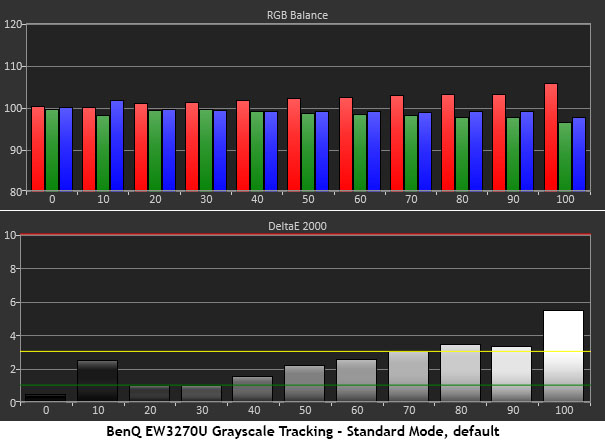
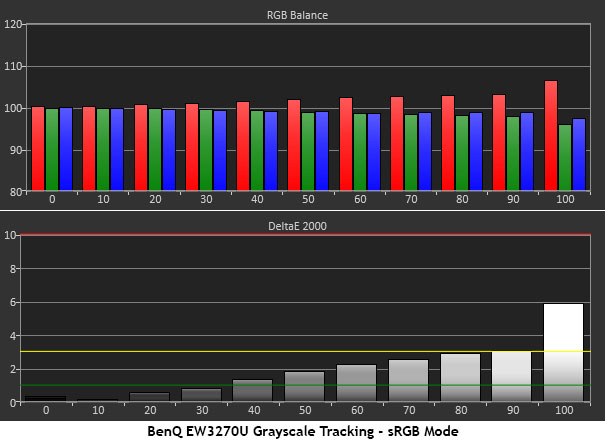
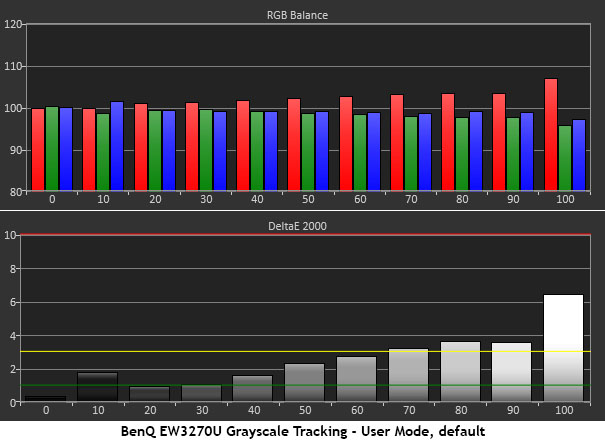

When left unadjusted, the EW3270 exhibits a barely-visible red tint, regardless of picture mode. Most of the brightness range posts numbers under 3dE, the point where errors can be seen. At 100% though, it’s a little more obvious. Perfection is within reach in the User mode, which offers pro-level accuracy with DCI-P3 color. It would be nice to have RGB sliders available in the sRGB and Rec.709 modes.
Comparisons
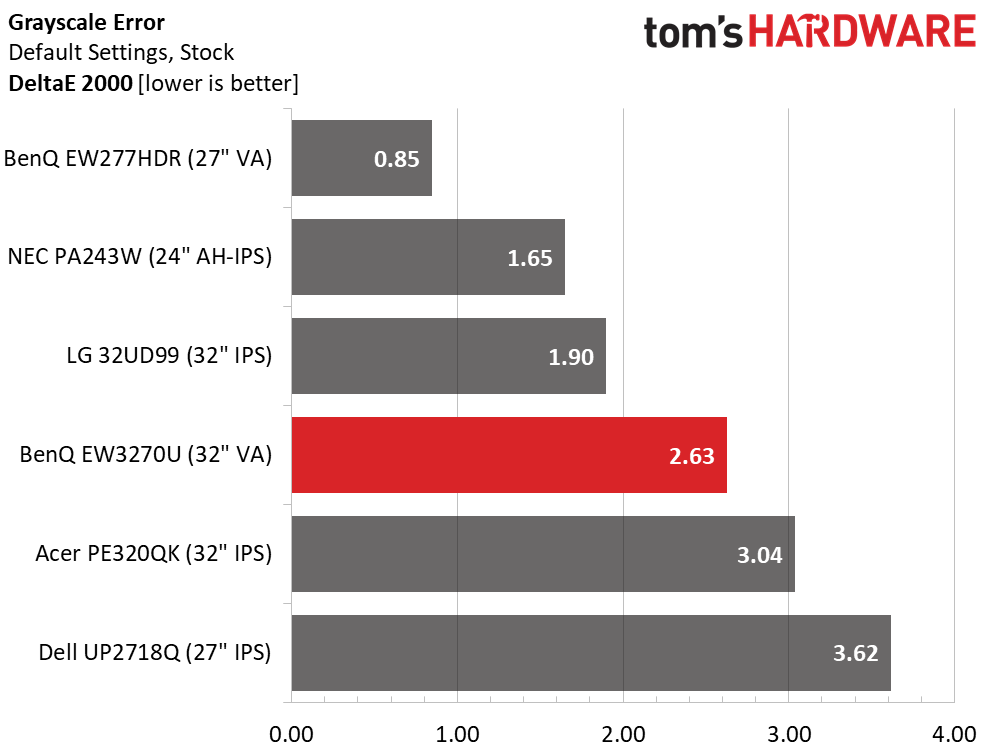
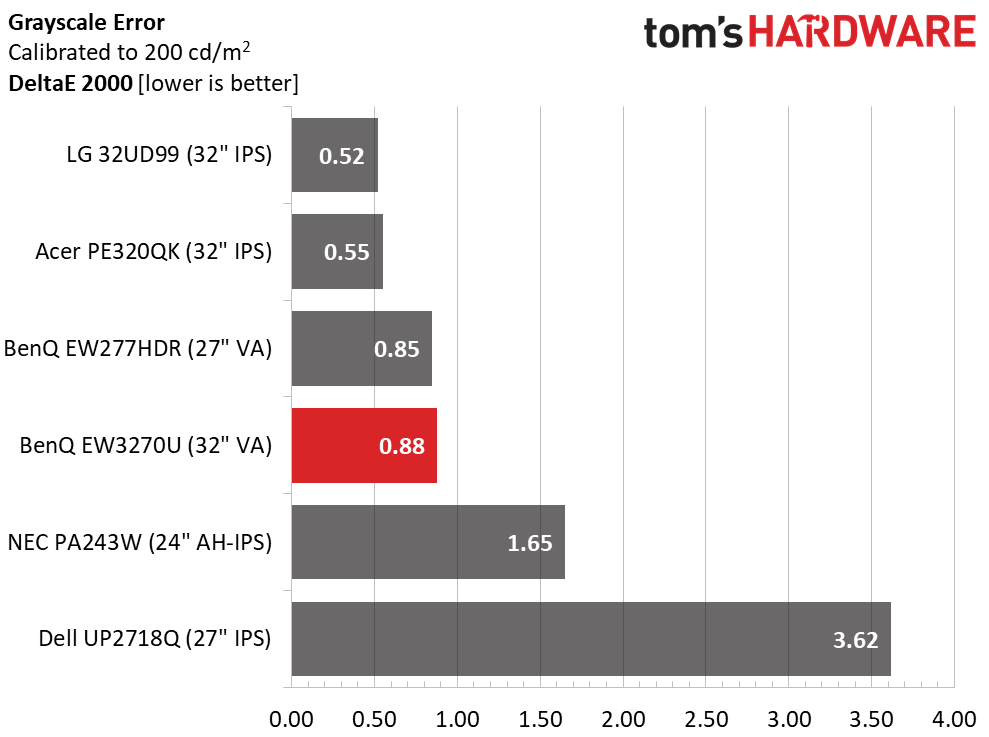
2.63dE is a very respectable average grayscale error for any monitor in the enthusiast category. The BenQ EW3270U doesn’t come with a factory calibration, so its default performance is in line with many of the gaming and business display we’ve reviewed. A couple of tweaks to the User mode turns it into a usable mastering screen if DCI is the intended color gamut. While this is by no means an inexpensive product, it’s priced well below comparable professional screens of the same size and capability.
Gamma Response

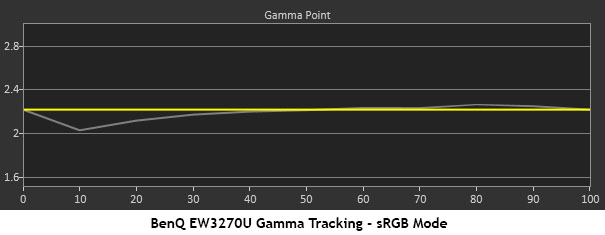
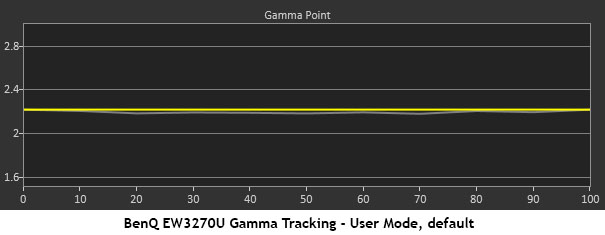
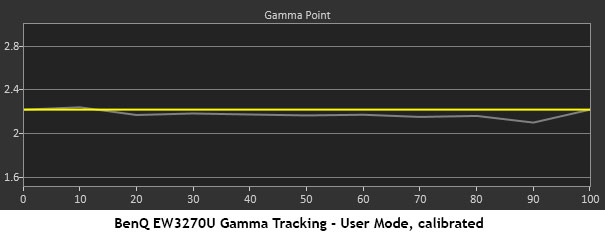
BenQ nails its gamma tracking in all the EW3270U’s modes. The other presets offer the same linearity at levels above and below 2.2. The default sRGB trace shows a slight dip at 10%, but that cannot be seen by the naked eye. Our adjustments have a small impact from 70-90%, but again this is not an issue of consequence. You’ll see the positive effects of this in our color saturation tests below.
Comparisons
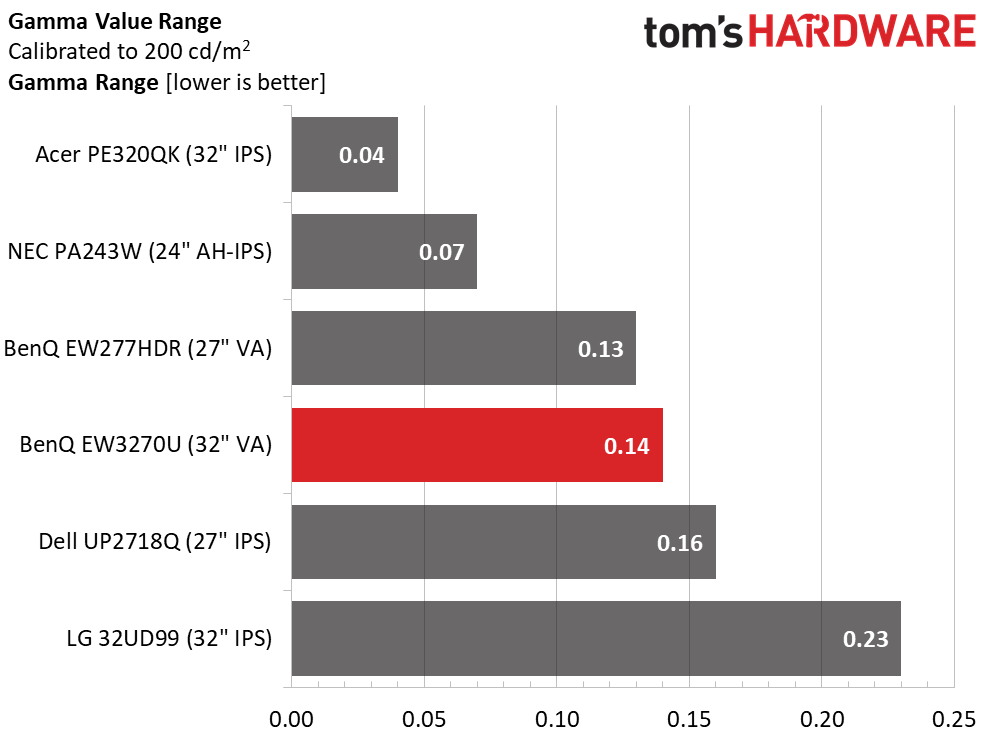
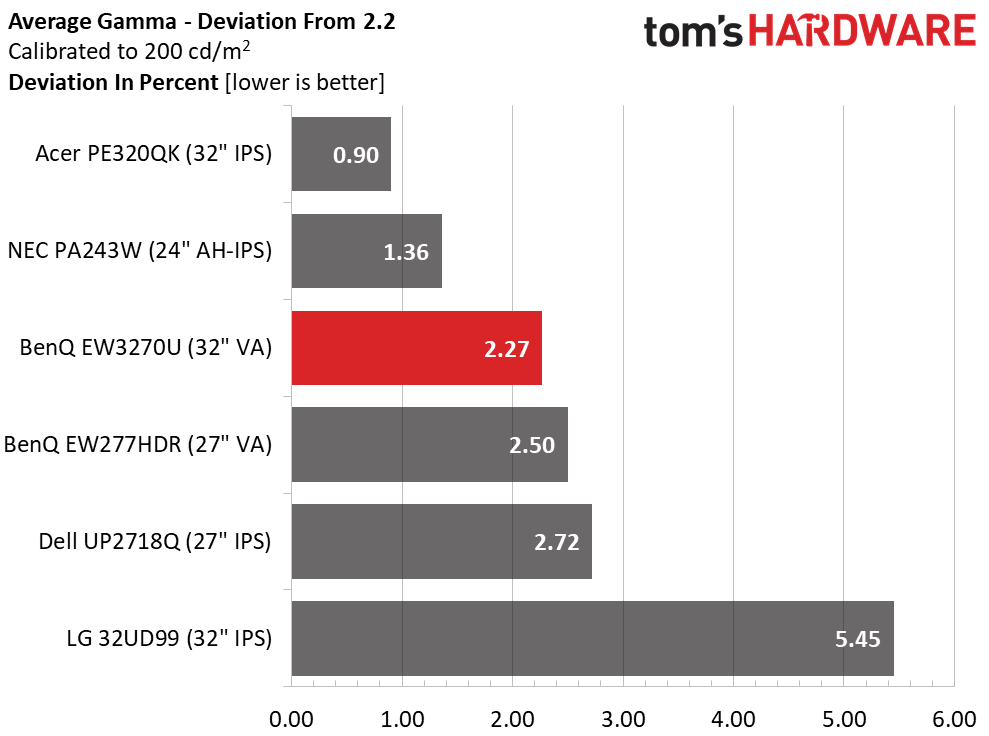
The BenQ EW3270U has a very small range of gamma values across its luminance range. And it sticks closely to the 2.2 standard both before and after calibration, with an average of 2.15. One can expect the same performance in all picture modes, given the results we measured. This is critical to proper color saturation tracking, which we’ll show you now.
Get Tom's Hardware's best news and in-depth reviews, straight to your inbox.
Color Gamut & Luminance
For details on our color gamut testing and volume calculations, please click here.
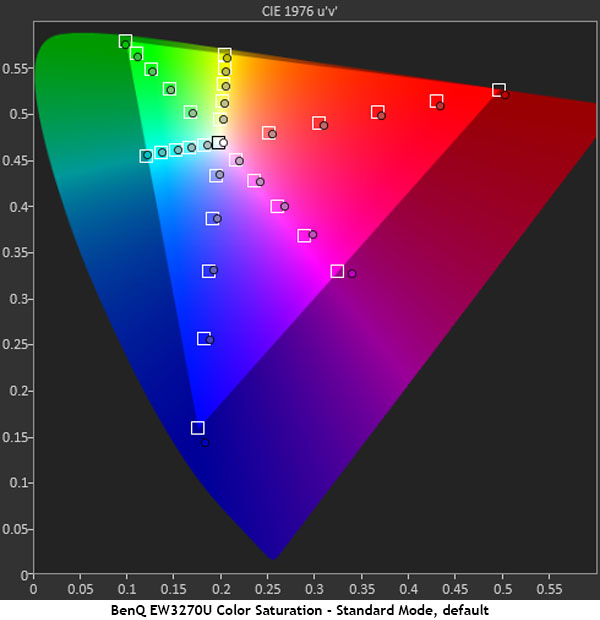
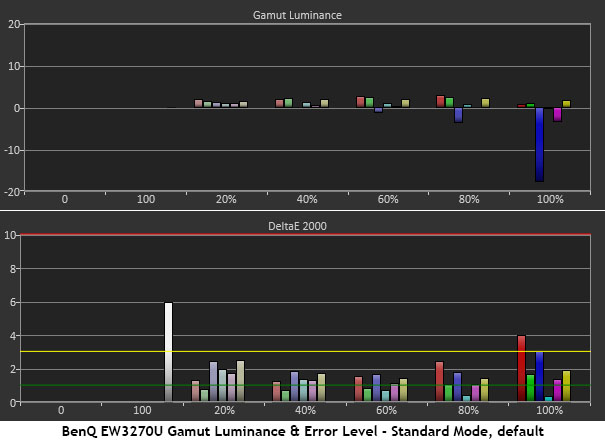
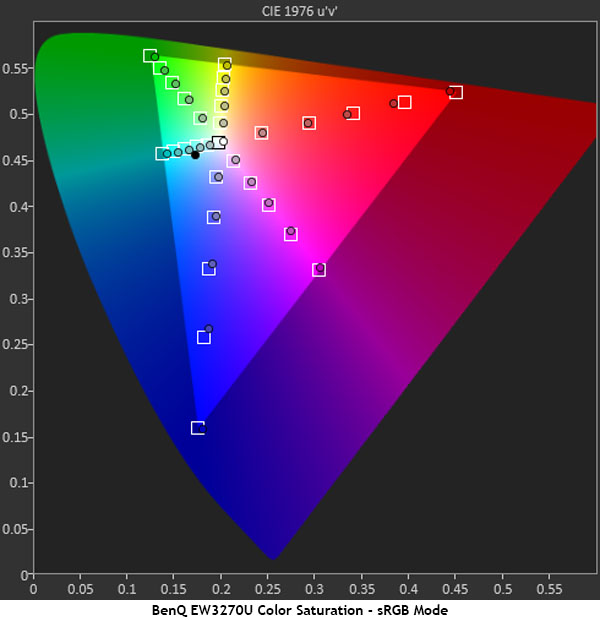
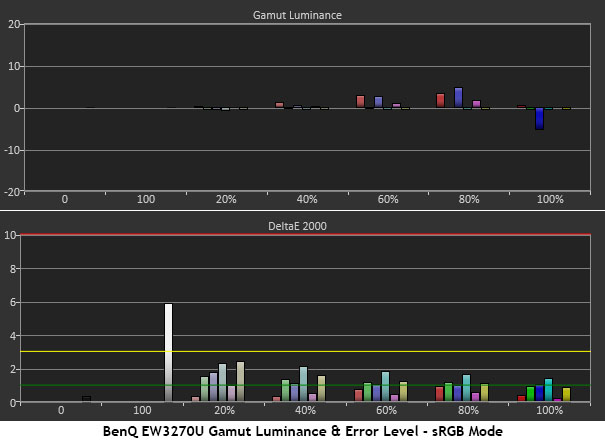
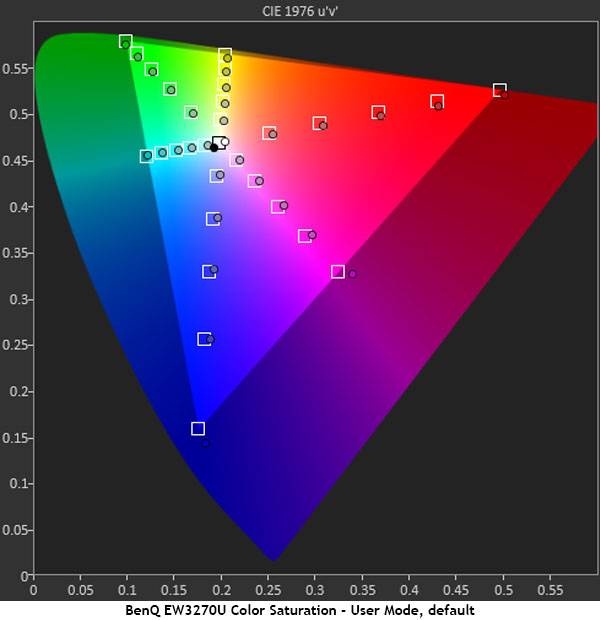
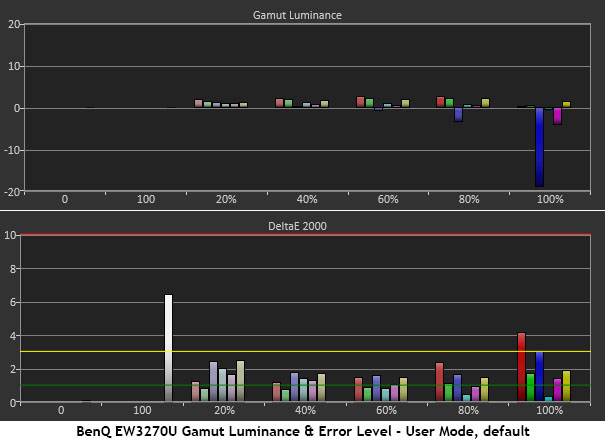
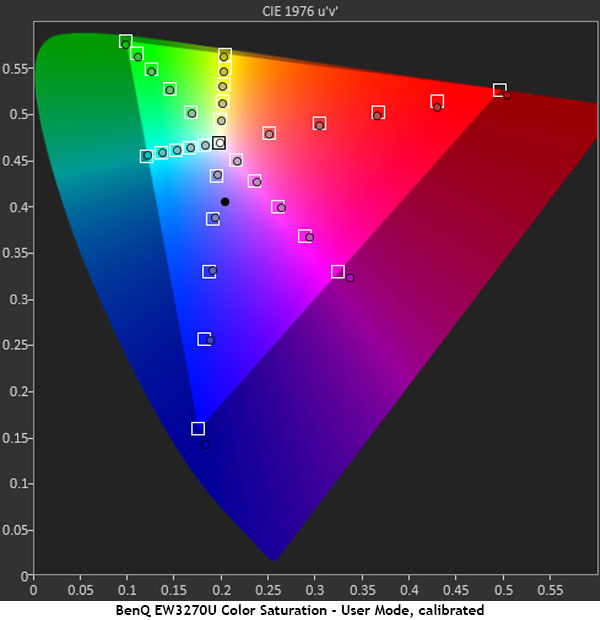
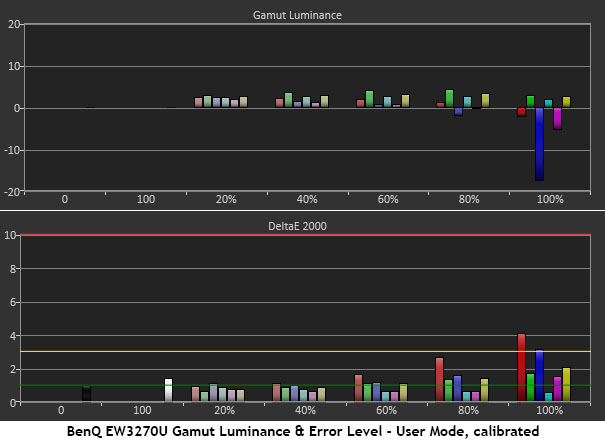
As we said earlier, the EW3270U is a two-gamut monitor. It hits the targets for both DCI-P3 and sRGB through the full range of color saturation. Aside from a slightly-red white point, there is no need to calibrate this display. When gamma is set to 3, every point is in contact with the target box, which represents 1dE. Luminance values are neutral, with none exceeding 5% except blue. That primary is dialed back a little to compensate for its oversaturation at 100%. Aside from that, this BenQ is as close to perfect as any monitor can be, delivering professional-level performance.
Comparisons
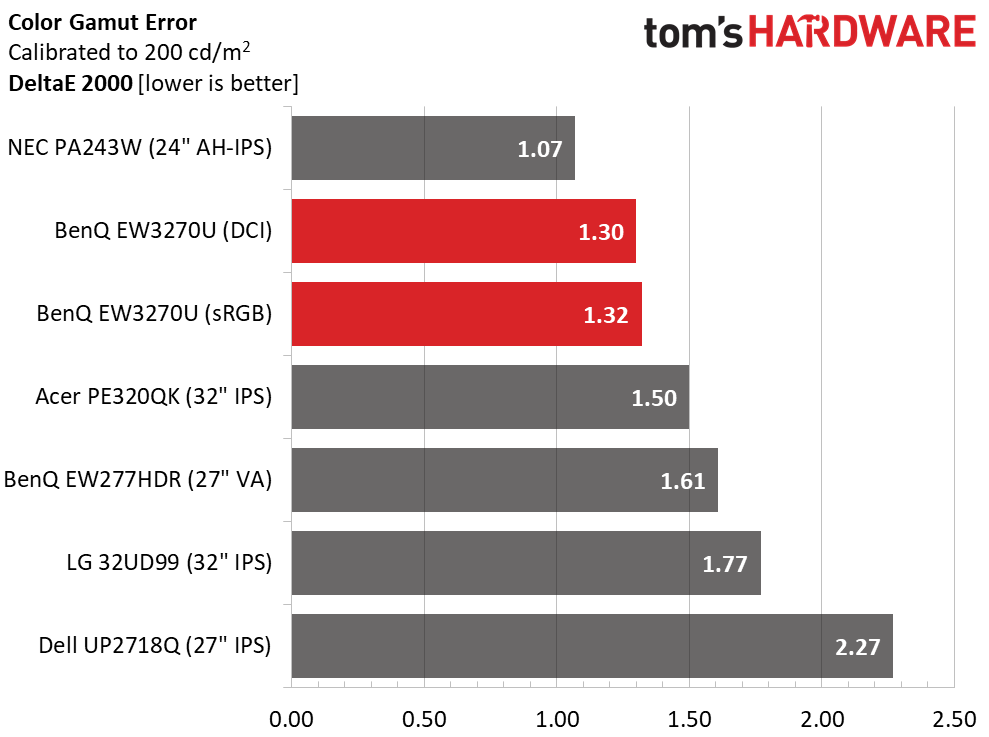
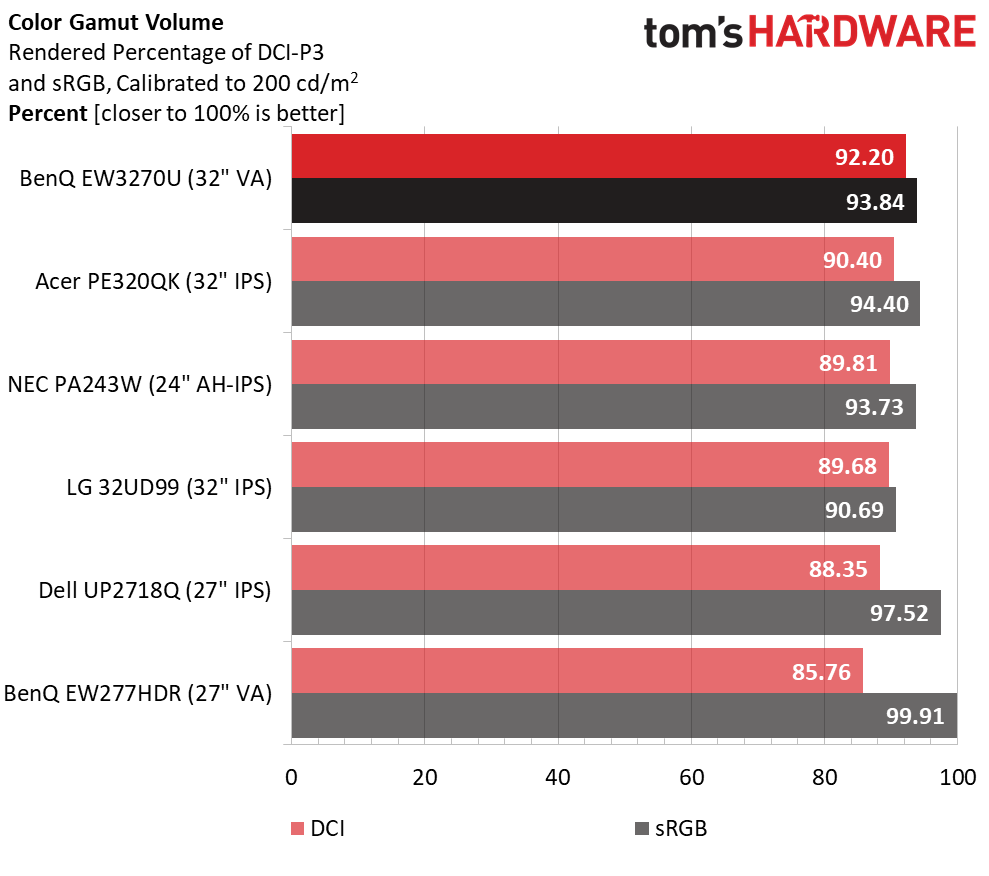
Only the NEC PA243W can best the BenQ EW3270U in the color accuracy test. And that monitor sells for quite a bit more money while being smaller and delivering lower resolution. All the HDR monitors we’ve tested so far exhibit better-than-average color performance, in fact. Hopefully, that will be a trend we see in future monitors in lower price categories as well.
In the volume chart, we’ve mapped gamuts for DCI-P3 rather than Adobe RGB, along with the usual sRGB. All six monitors have that color mode, and all come close to the 90% mark except the BenQ EW277HDR. The BenQ EW3270U has the largest gamut volume we’ve measured so far, by a small margin.
MORE: Best Gaming Monitors
MORE: Best Professional Monitors
MORE: How We Test Monitors
MORE: How To Choose A Monitor
MORE: All Monitor Content
Current page: Grayscale, Gamma & Color
Prev Page Brightness & Contrast Next Page HDR Grayscale, EOTF & Color
Christian Eberle is a Contributing Editor for Tom's Hardware US. He's a veteran reviewer of A/V equipment, specializing in monitors. Christian began his obsession with tech when he built his first PC in 1991, a 286 running DOS 3.0 at a blazing 12MHz. In 2006, he undertook training from the Imaging Science Foundation in video calibration and testing and thus started a passion for precise imaging that persists to this day. He is also a professional musician with a degree from the New England Conservatory as a classical bassoonist which he used to good effect as a performer with the West Point Army Band from 1987 to 2013. He enjoys watching movies and listening to high-end audio in his custom-built home theater and can be seen riding trails near his home on a race-ready ICE VTX recumbent trike. Christian enjoys the endless summer in Florida where he lives with his wife and Chihuahua and plays with orchestras around the state.